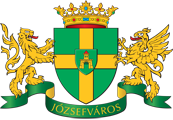The Emergence of the Palace Quarter
Before elaborating on the history of the Palace Quarter, it is necessary to make a clear distinction between two quarters of Budapest for they are often mistaken for each other. The one in Buda is called the Castle Quarter and the other in Pest is called the Palace Quarter. An earlier name for this area was the ‘Magnates’ Slum’ indicating with a touch of irony that the inhabitants of this region were not always famous for their good manners.Today, in 2012, the name „Palace Quarter” is used in an administrative sense as the part of Józsefváros. The Palace Quarter lies between two avenues and it is circled by Rákóczi and Üllői Roads. Though, historically it is a much smaller area, including the few streets behind the National Museum, which was the first palace built in the Quarter.
As we walk around the downtown, we can see reminders of the old city wall from the 1720s like the “Hatvani Rondella” (old city gate) in the underground passage of Astoria Square, and the Kecskeméti Gate under the Korona Hotel in Kálvin Square. Before 1730 there were only three roads crossing the Palace Quarter: the old Kerepesi Road (today it is Rákóczi Road), Szolnoki Road (today it is Üllői Road), and Kőbányai, Major or Kálvária Road – which is Baross Street today. Though the question arises why people wanted to live in this area, the answer is simple. They found jobs here, since at that time great building projects took place in this region. The Invalidus Palace (the buildings of today’s City Hall) was built at that time too.
As the city continued to develop, Józsefváros became one of the suburbs of Pest in 1777. Józsefváros was named after Saint József or the later King József II. In 1838 there was a great flood caused by the Danube, which strongly determined the change of architecture in the region. It is hard to imagine that Józsefváros was flooded by two metres of water, destroying the cob-walls of the houses. Approximately 900 buildings collapsed due to the flood and only 250 remained undamaged. A speedy renovation followed the tragedy and from the line of Somogyi Béla Street – Mária Street to the downtown the construction of only stone houses was permitted, allowing the Palace Quarter to become more like a city.
In 1802 Earl Ferenc Széchényi made a pledge to donate his collection of national treasures to the nation. In 1807 the institution of the National Museum became the property of the state and in 1813 the nation was permitted to purchase the buildings and land where the National Museum stands today. The classicist style building designed by Mihály Pollack took ten years to be completed.
Walking further down in Bródy Sándor Street we see the street’s most prominent building the Old House of Parlament. The Austrian emperor and Hungarian king, József Ferenc ordered on 5th August in 1865 that a palace should be built in Pest for the Members of Parlament. On 9th of September the construction of the building began according to Miklós Ybl’s plans. Today the Italian Cultural Institute is located here.
The area became more valuable as the National Museum had been completed reinforcing a process of the aristocracy building their palaces and mansions right next to each other in this region. As György Festetics said, “If a Hungarian magnate has a palace in Vienna, he should have one in Pest as well.”
Festetics entrusted Miklós Ybl with planning most of the buildings in the region of the National Museum. The first city palace was the Festetics Palace (built between 1862 and 1865) which was a baronial palace. Then in 1863 the Károlyi Palace, and finally the Dégenfeld-Schomburg Palace, which used to be a multi-storey tenement house, was built between 1872 and 1874. The renovation of the Festetics Palace, which is the home of the Andrássy University today, was finished in 2002. The building is not only perfect for grand occasions but its Mirror Hall may also serve as a concert venue for classical music events. Between the two Ybl-Palaces at Pollack Square, you can see the Eszterházy Palace built in 1871, which used to be the presidential residency of Zoltán Tildy between 1946 and 1948. Due to the excellent acoustics of its Marble Hall the Hungarian Radio regularly uses this space to record concerts.
Last but not least, I must mention the Wenckheim Palace which was built in 1887 designed by Artúr Meinig. It is an eclectic style building which was bought by the capital city in 1926, whereupon it was turned into a library. The first director was Ervin Szabó, and so the library got its name after him. The palace was renovated between 1998 and 2001 restoring the interior spaces to their original state.
Before finishing the story of the Palace Quarter, I must mention a novel by Miklós Bánffy published again this year. Most of the scenes are situated in the Palace Quarter in the early 19th and late 20th century. The author of the book was himself an aristocrat who lived in one of the palaces in Reviczky Street.
Finally, I would like to encourage You, Dear Reader to delve into the book and ponder whether the Palace Quarter would ever become such an elegant place again where the inhabitants are proud of their environment, and so they take care of it whole-heartedly.




